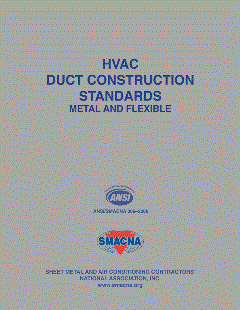By day, 25-year-old Catie Rogers is a sheet metal apprentice, training and working at Poynter Sheet Metal in Greenwood, Indiana.
It’s a rarity — a female millennial learning a trade in the overwhelmingly male-dominated construction industry. She’s the only woman in her class at Sheet Metal Workers Local 20 in Indianapolis.
What may be even more unusual, however, is that by night or anytime she isn’t working, Rogers is an evangelist for other women to join the ranks of the nation’s sheet metal workforce. She’s asked waitresses if they’ve ever considered learning a trade and talked up the pay and benefits available through the union.
“The goal is to get more women into the building trades as a whole,” Rogers said. “This is time I could be spending with my kid, but I’m so passionate about it.”
Like many construction jobs, experts have long predicted that the HVAC industry faces a looming worker shortage. According to a 2015 study commissioned by the HVACR Workforce Development Foundation, the industry will need 115,000 more workers by 2022 to meet anticipated demand for technicians.
At a time when many worry that there won’t be enough HVAC and sheet metal workers — of any gender — to meet future demand, Rogers’ personal mission on behalf of the industry is sorely needed, according to Poynter President Joseph Lansdell.
“If more people were involved like Catie and recruiting their friends, we wouldn’t have that shortage,” he said.
Lansdell recently completed a term as president of the Sheet Metal and Air-Conditioning Contractors’ National Association. Getting more young people interested in industry careers was one of the issues he stressed when meeting with officials from member companies.

Glenda Ritz (left), former superintendent of public instruction for the state of Indiana, talks to apprentice Catie Rogers during a visit to Local 20’s training school.
Workers needed
It’s not just the industry’s own studies that say HVAC needs more workers. The U.S. government agrees. Employment of HVAC and refrigeration mechanics and installers is projected to grow 15 percent from 2016 to 2026 — much faster than the average for all occupations, which is around 7 percent, according to data from the Bureau of Labor Statistics. Employment for sheet metal workers is projected to grow 9 percent between 2016 and 2026, according to the bureau.
The most recent government figures say only 2 percent of women work as HVAC mechanics or installers out of approximately 448,000 positions nationwide. Among sheet metal workers, the figures are similar: 2.6 percent of an estimated 137,000 employees are females.
Although historically the number of women choosing construction careers has been very low, Rogers and members of similar-minded groups such as Women in HVACR say it doesn’t have to be that way.
“If you are career-minded and career-focused and want to grow … this is the industry for you,” said Danielle Putnam, president of The New Flat Rate, a pricing system for HVAC, plumbing and electrical service contractors.
Putnam is vice president of Women in HVACR, a 400-member group that has been promoting industry careers for females since 2001. She said that the organization really seeks the lack of women in construction as an amazing opportunity for those who want to jump in.
“There’s room to really follow your strengths,” she said, whether that’s working as a technician or in sales.
Every female job applicant automatically stands out, Putnam said, adding that companies are calling Women in HVACR, looking for people to hire or posting available positions on its LinkedIn page.

Sheet metal apprentice Catie Rogers takes a measurement during her classes at Sheet Metal Workers Local 20’s training facility in Indianapolis.
A suggestion
In Rogers’ case, it was a suggestion from a welding teacher at Emmerich Manual High School in Indianapolis that made her consider a sheet metal career. As the only female in her class, it was clear she wasn’t put off by entering a male-dominated industry, so he mentioned that sheet metal offered paid apprenticeships and good wages.
It was a career choice she hadn’t considered.
“I was really kind of stumped with what I wanted to do,” she recalled. “My family didn’t have the money to pay for me to go to school.”
She thought about becoming a writer, but knew that it would take a lot of money to pay for college and there was no guarantee she’d find a job after graduation.

Catie Rogers says she regularly talks to other women about considering a career in the HVAC industry.
“Which is devastating,” Rogers said, adding “and so many people my age go through that.”
With the apprentice program, if she was accepted, it was a five-year commitment, but she’d be making money while going to the union’s school.
Rogers knew a little bit about sheet metal work: two uncles were in the industry, she said. But they discouraged her from applying.
“They knew that it would be a struggle for me,” she said. “They knew that there aren’t many women.”
But being an outcast didn’t faze her. She said she often felt like that in high school, so it wouldn’t be something she wasn’t used to. Rogers was accepted into Local 20’s training program. But if her teachers talked about encouraging more women to join the sheet metal ranks, she soon found some construction workers, especially those in other trades, did not have such progressive views.
She was touched inappropriately by one man while on a job site. She didn’t report the incident, but she physically fought back to ensure it didn’t happen again.
“I have gotten this underlying respect (now),” Rogers said. “It’s not really how I wanted to achieve it, but it’s what I had to do being the only girl.”

Danielle Putnam, president at The New Flat Rate, says the HVAC industry offers lots of opportunities for women. Putnam is also president of Women in HVACR, a group that promotes industry careers to females.
Culture shifts
Changing that culture will take time, Rogers acknowledged, but it’s something she wants to tackle. Her long-term goal is to become something perhaps even rarer than a female sheet metal worker: a union recruiter for the industry.
She’s already practicing. Whenever she’s not working, she’s talking about the benefits a sheet metal career has offered women like her. At 25, Rogers’ earnings have allowed her to buy her first house.

Catie Rogers says working in the sheet metal industry has offered her more opportunities than she could have ever imagined.
She’s approached waitresses at Applebee’s and asked strangers at gas stations if they’ve ever heard of sheet metal work. She’s posted messages on her Facebook page about how great the career is.
“I’ll talk to anybody,” she said. “I want to be the girl I needed when I got in the trade. I want to make it easier for women to get information about construction.”
She’s had some success in her one-person recruitment efforts. Rogers has connected with female-oriented construction organizations in Chicago and Oregon, and recently spoke about HVAC work to a group of about 30 local women. She took a handful on a tour of Local 20’s training facility and the sheet metal shop at Poynter. A few women have decided to apply to the union’s training program.
Rogers said she’s going to do what she can to help them succeed.
“I really stay connected with all these girls that I talk to,” she said. “I’m 100 percent honest. This is a male-dominated trade and you do have to have thick skin. It’s not for everybody.”
But it’s offered Rogers a life that she could not have imagined.
“It changed my life to have benefits, to have a pension,” she said. “I want to go to the schools where people think ‘Those kids aren’t going to amount to anything.’ These kids have no other options — or so they think. Your life is a blank canvas and you have a paint brush. You can paint it any way you want.”
For reprints of this article, contact Jill DeVries at (248) 244-1726 or email devriesj@bnpmedia.com.








